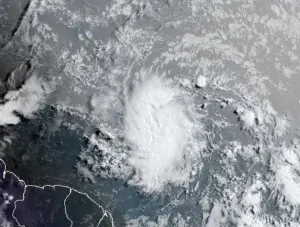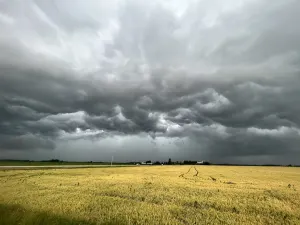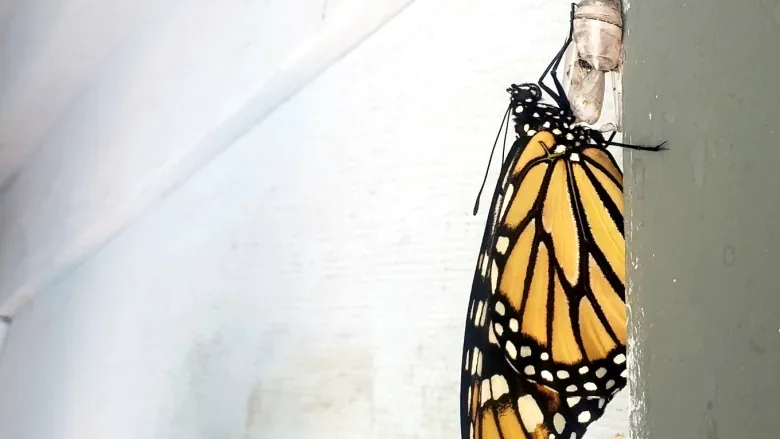
How these monarch butterflies found refuge from Fiona's harsh winds
Just hours before post-tropical storm Fiona pummelled many parts of Nova Scotia in September, a monarch butterfly was emerging from its chrysalis on Wanda Baxter's deck.
It's a familiar site for the author and activist who has transformed her Lunenburg County farmstead into a haven for the endangered species. Baxter knew the butterfly needed several hours to hang upside down and dry its wings before beginning its remarkable journey south to Mexico.
SEE ALSO: Monarchs are in decline, but there is a simple way YOU can help
But Fiona threatened to foil the pollinator's multi-generational migration.
"I don't like to bring monarchs in the house. I'm not rearing them, or taking care of them. I want the monarchs to survive outside," Baxter told CBC Radio's Information Morning.
"But I knew that one would die so I did bring it in … and then listening to the rain that night I was very glad I had done that."

Wanda Baxter, an author and activist in Lunenburg County, N.S., realized several monarch butterflies on her property had emerged from their chrysalises just as post-tropical storm Fiona was about to strike Atlantic Canada on Sept. 24. (Wanda Baxter)
The butterfly spent the nights of Sept. 23 in Baxter's bathroom, surrounded by flowers. The next day, she found four more butterflies wriggling free from their chrysalises so she brought them inside, too.
"Those guys spent the night hanging out on the screen, and on the flowers and drying out their wings, and then Sunday morning I took them out and they all flew away," she said.
The force of Fiona was traumatic for many pollinators, as well as birds, bats, and other animals but it's difficult to calculate how much damage was done, said wildlife biologist Bob Bancroft.

Baxter created a safe place for the butterflies in her bathroom. (Wanda Baxter)
"I can imagine how fragile a butterfly is so there's a lot of impacts here that aren't being measured very well," Bancroft, president of Nature Nova Scotia, told Information Morning.
The young monarch butterflies that hatched this summer on Baxter's property are part of the fourth and final stage of the insect's life cycle.
It takes four generations to complete the migration between northern climates like Nova Scotia and wintering grounds in Mexico.
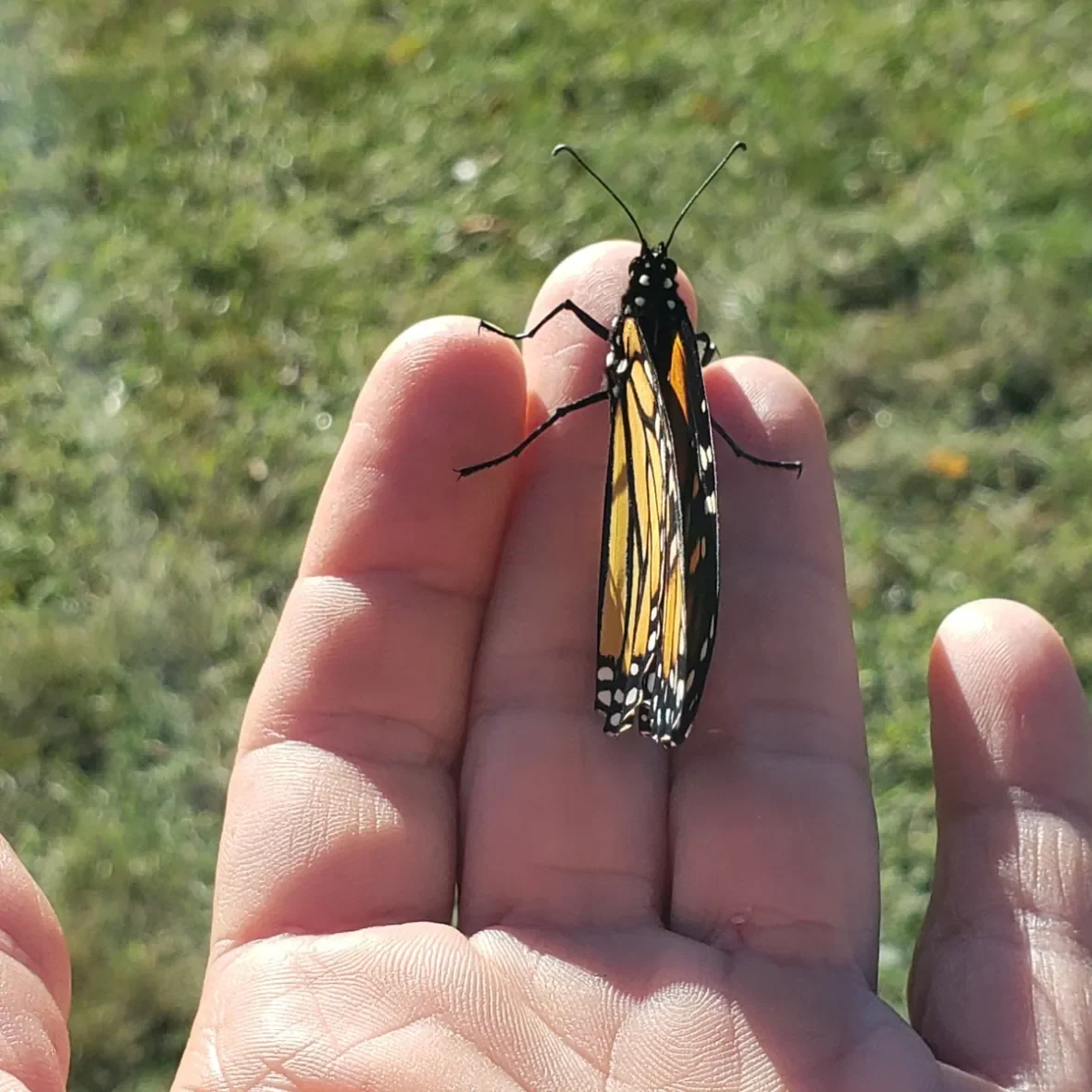
Baxter said she doesn't like to bring the butterflies inside, but she made an exception during post-tropical storm Fiona. (Wanda Baxter)
"The adults come here, they lay their eggs and the young monarchs are the ones that actually leave eastern Canada and head for Mexico and then wind up over-wintering down there," said Bancroft.
Bye bye butterflies
Baxter began planting milkweed on her property five years ago. The plant is key to monarch's survival because it's the only place where they lay their eggs.
The very first year Baxter planted milkweed, the monarchs showed up and she estimates this season about 80 butterflies were born and flew from her property.
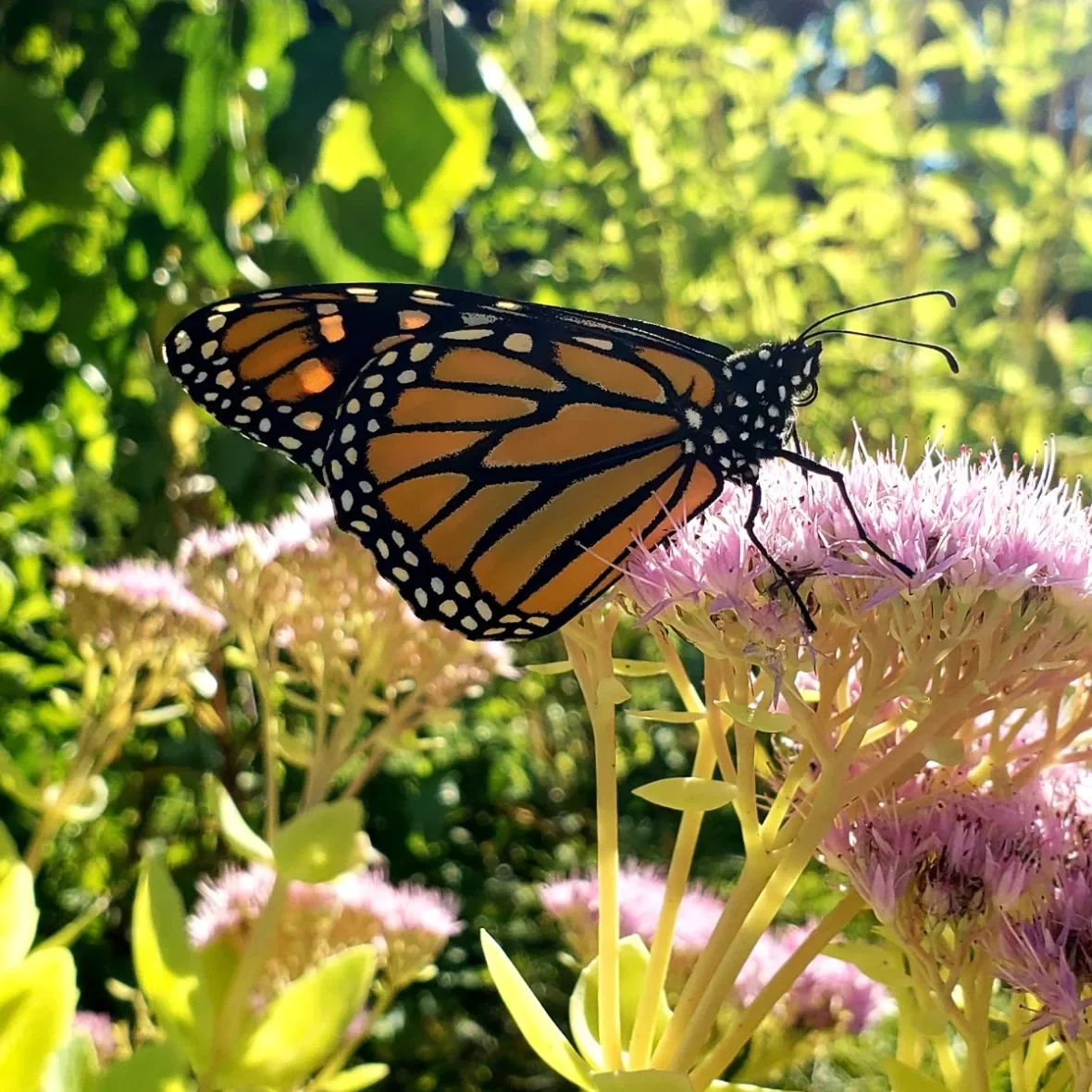
Baxter estimates about 80 monarch butterflies flew from her property this year. (Wanda Baxter)
"This year was banner. It was a huge breeding year," she said of the season, which runs from about July to September. "There were a lot of eggs. Everyone I know actually ran out of plants, I was one of them."
It was bittersweet, Baxter said, to watch the monarchs that had weathered the storm in her house take flight the next morning.
"I was really excited that they made it through the hurricane," she said. "The second thing I felt was a little bit sad because it was the end of the season. Those were the last ones that left."
But next year more monarchs will arrive, and Baxter is busy planting milkweed seeds so she's ready for them.
WATCH: Monarch butterflies are now officially endangered
The story, written by Emma Smith, was originally published for CBC News. It contains files from Jerry West and CBC Radio's Information Morning.







